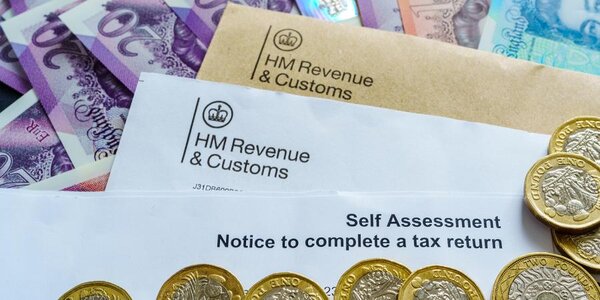Let’s Break This Down Together…
Wondering if your side hustle needs to be declared to HMRC? You’re not alone.
With tax thresholds, digital platforms sharing data, and new rules arriving in 2025, it’s never been more important to understand the tax you might owe.
This guide helps you figure it all out – from trading allowances to registration dates – with practical tips and plain English.
What Counts as a Taxable Side Hustle?
Almost any activity that makes you money alongside your main job could be taxable. Examples of side hustles include creating content, online content creation, and selling vintage clothes, all of which are increasingly popular in the digital economy.
The key question isn’t whether you consider it a business. It’s whether HMRC or HM Revenue would view it as a trade or business activity, and how your earnings from making money through these activities are reported and taxed.
Even casual income streams can be taxable if they show patterns of trade. Buying items specifically to resell at a profit is a common example. Side hustles can also include taking on a second job, and many people operate as self employed, under self employment rules, or as a sole trader. The entrepreneurial spirit is encouraged by recent trends, making it easier for individuals to start and grow their ventures.
If you're unsure whether your side hustle is taxable or how to report it, we can help you understand your obligations and ensure everything is handled correctly with HMRC.
Understanding Side Hustle Tax UK Rules
The most important rule to know is the £1,000 trading allowance. If your total side hustle income before expenses is under £1,000 in a tax year, you typically don’t need to report it.
Once you earn more than £1,000, you’ll need to register for Self Assessment and file a tax return. The process of filing tax returns is required for those above the threshold, ensuring all income is properly declared. Your side hustle profits will be added to your other income to determine your tax rate.
If your main job already takes you into higher rate tax, your side hustle profits might be taxed at 40% or even 45%. Remember, it’s gross income that counts toward the threshold – not profit.
HMRC now receives data from payment platforms like PayPal and marketplaces like eBay. This makes it easier for them to spot undeclared income. The government has introduced a new simple online service that allows small traders and side hustlers to pay tax more easily, reducing the need for complex tax returns and making compliance simpler.
HMRC continues to simplify compliance through recent government reforms. The Exchequer Secretary to the Treasury, James Murray, has announced changes aimed at streamlining tax processes and supporting entrepreneurs, making paying tax and staying compliant more straightforward for side hustlers.

Tax Thresholds and Allowances for Side Hustlers
Understanding how tax thresholds and allowances work is key to making the most of your side hustle income. In the UK, the trading allowance lets you earn up to £1,000 from your side hustle each tax year without needing to pay tax or even report it to HMRC. This means that if your hustle income, whether from dog walking, selling old games, or creating online content, stays under this threshold, it’s completely tax free.
However, once your side hustle income goes over £1,000 in a tax year, you’ll need to pay income tax on the amount above the trading allowance. On top of this, everyone gets a personal allowance, which is £12,570 for the 2023/24 tax year. This personal allowance covers your total income from all sources, including your main job and any extra income from side hustles. If your combined income exceeds this tax free allowance, you’ll need to pay tax on the excess according to the current tax rules.
It’s important to keep accurate records of your trading income and expenses so you can make the most of these allowances and avoid paying more tax than you need to. The tax authority, HMRC, regularly updates its guidance on side hustle tax, so it’s worth checking their website to stay compliant and up to date.
By understanding the trading allowance, personal allowance, and how they apply to your side hustle income, you can ensure you only pay tax when you really need to.
When to Register for Self-Assessment
You need to register for Self Assessment by 5th October after the tax year in which you exceeded the £1,000 threshold. For example, if you started earning over £1,000 between April 2023 and April 2024, register by 5th October 2024.
Registration is straightforward through the HMRC website. You'll need your National Insurance number and basic personal details.
Most side hustlers register as sole traders, which is the simplest option. Limited company status brings more paperwork but might offer tax advantages for higher earners.
I learned this lesson the hard way when I started selling vintage clothing online. I missed the October deadline and faced a £100 penalty, an expensive mistake for a fledgling business.

Essential Record-Keeping for Side Hustlers
Good record-keeping doesn't need to be complicated. At minimum, keep all invoices, receipts for income and expenses, and relevant bank statements.
A simple spreadsheet works for many side hustlers, though dedicated apps can make things easier. Keep your records for at least 5 years after the tax return deadline.
Mixing personal and business finances is a common mistake. Consider a separate bank account for your side hustle to make record-keeping simpler.
Reducing Your Tax Bill Legally
You can deduct "wholly and exclusively" business expenses from your side hustle income before calculating tax. This includes materials, website costs, and selling fees.
If you work from home regularly, you can claim simplified expenses based on the hours you work. For business vehicle use, you can claim 45p per mile for the first 10,000 miles.
Keep receipts for everything. HMRC may ask for evidence of expenses if they check your return.
Managing Tax Payments
Self Assessment tax is typically due by 31st January after the tax year ends. For higher earners, you'll also make advance "Payments on Account" for the next year.
These advance payments can catch new side hustlers by surprise. Your first tax bill might include both the tax for the previous year and 50% of that amount as an advance.
Setting aside 25-30% of your side hustle income for tax is a good rule of thumb for basic rate taxpayers. Contact HMRC early if you can't pay to arrange a payment plan.

Special Rules for Popular Side Hustles
Online Selling
Occasional selling of personal items isn’t taxable. But regularly buying to resell or making items to sell counts as trading.
Property Income
Renting out a room in your home? The Rent a Room scheme gives a generous £7,500 tax-free allowance. Short-term lets like Airbnb typically fall under property income rules.
Digital Content Creation
YouTubers, Instagrammers and TikTokers need to declare advertising revenue, sponsorships, and affiliate income. Free products given for review technically count as taxable income too.
Cryptocurrency
Crypto trading profits are subject to Capital Gains Tax, not Income Tax. The rules are complex, so keep detailed records of all transactions.
Need to Pay Tax? Your Next Steps
If you’ve worked out that you need to pay tax on your side hustle income, your next move is to complete a self assessment tax return. This process is straightforward and can be done online using HMRC’s simple online service, or you can get help from an accountant if you prefer. You’ll need to declare all your hustle income, as well as any expenses you want to claim, to make sure your tax bill is accurate.
When filling out your self assessment return, be sure to include all relevant details, income from your side hustle, receipts for expenses, and any tax relief you’re entitled to. Claiming allowable expenses can reduce your tax liabilities, so keep good records and receipts throughout the tax year. Once you’ve submitted your tax return, HMRC will calculate your tax bill, and you can pay online, by phone, or set up a payment plan if needed.
Don’t forget to check if you’re eligible for any tax benefits or reliefs, such as those for investments or property income, as these can further reduce what you owe. If you’re unsure about any part of the process, it’s wise to consult a tax professional, they can help you navigate the tax rules and make sure you’re not missing out on any savings.
Completing your tax return accurately and on time is the best way to avoid penalties and stay on the right side of HMRC. By staying organised and proactive, you’ll keep your side hustle running smoothly and your tax affairs in order.

Final Thoughts
Starting your tax planning early makes everything smoother. Most tax problems come from putting things off, not deliberate avoidance.
HMRC offers helpful guides for new business owners. Their website has improved significantly in recent years.
When your side hustle starts growing, getting professional advice can actually save you money. An accountant can identify deductions you might miss.
Remember that tax rules change regularly. Staying informed is part of running a successful side hustle.
Simplifying Side Hustle Tax UK
Managing taxes across multiple income streams shouldn't give you a headache. Pie tax was built specifically for people juggling different income sources.
Our app connects to your bank accounts and automatically categorises transactions. It separates your side hustle from personal spending, showing your tax liability in real-time.
We've created specific expense categories for freelancers, online sellers, and property side hustlers. This makes it easy to claim everything you're entitled to.
When it's time to file, you can submit your Self Assessment directly through the app. No more wrestling with HMRC's website or missing important deadlines.
Curious to see how it works? You can explore the Pie tax app today with no commitment.
Quick and Easy Guide to File a Tax Return For Side Hustle Income
Follow these steps to file a tax return through Pie app
First create an income source and add your income in the bookkeeping section by swiping right on any taxable income you want to declare on your tax return. This will move the transaction into the ‘income tab’.Step 1

In the ‘Tax Overview’ section, each of the series of progress indicators must be checked and completed. Once you’ve confirmed that all progress pills are completed, tap on the ‘Submit to HMRC’ button. Step 2













